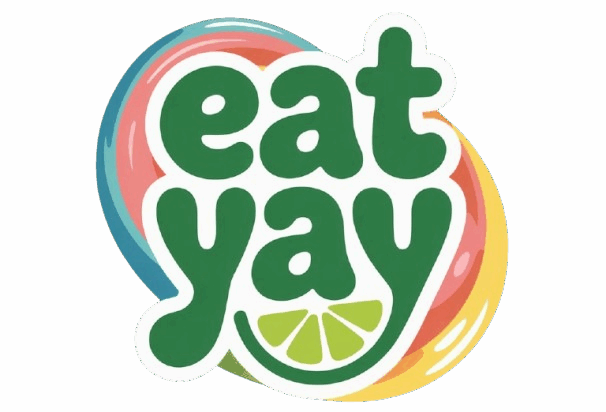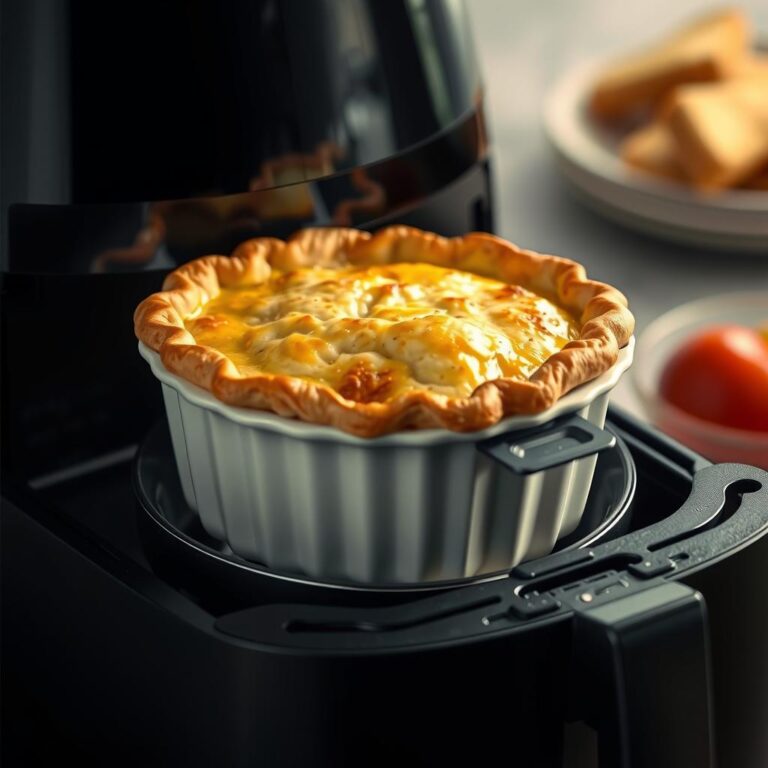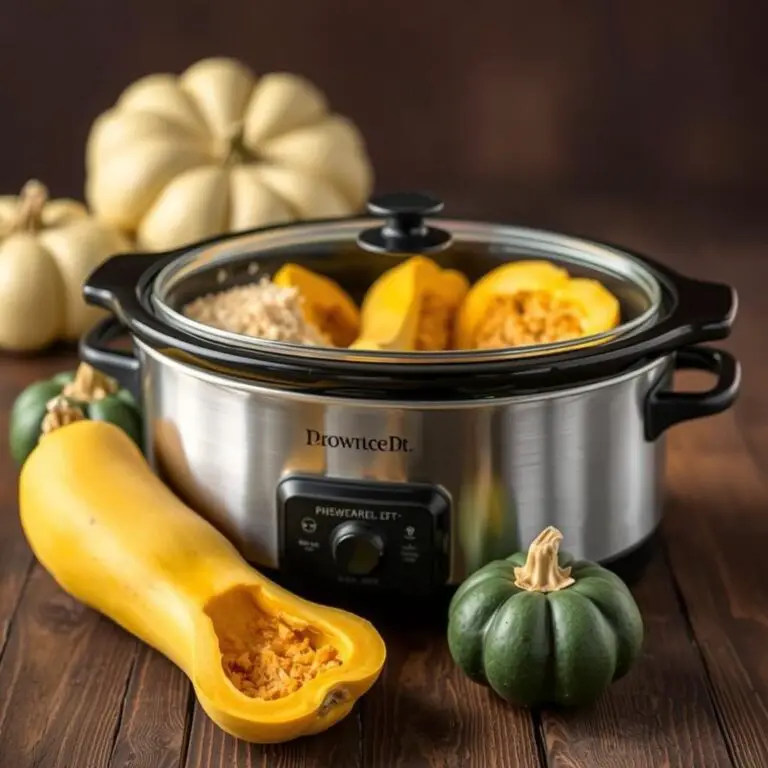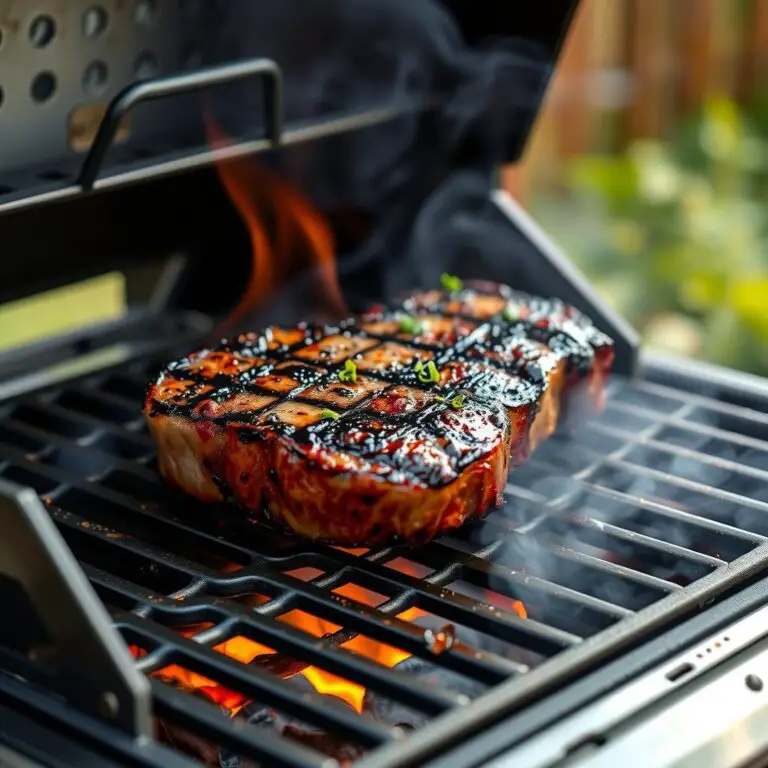Can you cook a frozen roast in a Dutch oven?
Let's get straight to the point: You can cook a frozen roast in a Dutch oven.
I know, you're probably staring at that hunk of frozen beef in your freezer, wondering if tonight's dinner plan is about to turn into a culinary disaster.
We've all been there.
But trust me, with the right approach, that frozen roast can become a tender, flavorful meal cooked perfectly in your Dutch oven.
Why a Dutch Oven for a Frozen Roast?
Dutch ovens are awesome for cooking, especially when you're dealing with something that starts out rock solid.
These heavy pots distribute heat evenly, crucial for thawing and cooking a frozen roast without ending up with a burnt outside and an ice-cold center.
They basically act like a mini-oven, creating a consistent cooking environment that helps break down tough muscle fibers and tenderize the meat.
Challenges of Cooking a Frozen Roast
Before we dive into the how-to, let's acknowledge the challenges.
- Longer Cooking Time: Obviously, a frozen roast will take significantly longer to cook than a thawed one.
- Uneven Cooking: The biggest risk is ending up with a roast that's cooked on the outside but still frozen inside.
- Seasoning Issues: Getting flavors to penetrate frozen meat can be tricky.
But don't worry, these challenges are totally manageable.
The Secret to Successfully Cooking a Frozen Roast in a Dutch Oven
So, how do we conquer these challenges and turn that frozen brick into a delicious dinner?
It all comes down to technique and patience.
Here's what I do.
Step-by-Step: Dutch Oven Frozen Roast Recipe
1. Prep the Roast (as much as you can):
While the roast is frozen solid, you can still do a few things.
-
Trim Excess Fat: Use a sharp knife to trim off any large chunks of fat that you can easily remove. This helps with even cooking and prevents excessive grease.
-
Season Generously: Because the meat is frozen, the seasoning won't penetrate as deeply. So, be generous. I like to use a mix of:
- Kosher Salt: Essential for drawing out moisture and enhancing flavor.
- Black Pepper: Freshly ground is always best.
- Garlic Powder: Adds a savory depth.
- Onion Powder: Complements the garlic.
- Smoked Paprika: Gives it a nice smoky flavor.
2. Sear the Roast (if possible):
This step is optional, but it adds a ton of flavor.
- Heat the Dutch Oven: Place your Dutch oven over medium-high heat with a tablespoon or two of oil (vegetable, canola, or olive oil work well).
- Sear the Sides: If you can manage to get any side of the frozen roast to make contact with the Dutch oven, Sear each side for a few minutes until browned.
- Don't Force It: If the roast is too frozen to sear properly, don't worry about it. Just move on to the next step.
3. Create a Flavorful Braising Liquid:
The braising liquid is key to keeping the roast moist and infusing it with flavor as it cooks.
- Aromatics: Add chopped onions, carrots, and celery to the Dutch oven. These will create a flavorful base for the braising liquid.
- Liquid: Pour in enough beef broth to come about halfway up the side of the roast. You can also add a splash of red wine for extra depth of flavor.
- Herbs: Add some fresh or dried herbs like thyme, rosemary, or bay leaves.
4. Slow and Steady Cooking:
This is where patience comes in.
- Bring to a Simmer: Bring the braising liquid to a gentle simmer on the stovetop.
- Cover and Transfer to Oven: Cover the Dutch oven with its lid and transfer it to a preheated oven at 275°F (135°C).
- Cook for a Long Time: Cook the roast for 6-8 hours, or until it's fork-tender. The exact cooking time will depend on the size and thickness of the roast.
5. Check for Doneness:
The best way to check for doneness is to use a meat thermometer.
- Internal Temperature: The roast is done when it reaches an internal temperature of 203°F (95°C). This is the temperature at which the collagen in the meat breaks down and becomes tender.
6. Rest and Shred:
- Remove from Oven: Carefully remove the Dutch oven from the oven and let the roast rest for at least 30 minutes before shredding.
- Shred the Meat: Use two forks to shred the meat. It should be very tender and easy to pull apart.
Serving Suggestions
- Classic Pot Roast: Serve the shredded roast with the braising liquid and the cooked vegetables.
- Sandwiches: Use the shredded roast to make delicious sandwiches on crusty rolls.
- Tacos or Burritos: Shredded roast makes a great filling for tacos or burritos.
Dutch Oven Frozen Roast: Key Takeaways
Cooking a frozen roast in a Dutch oven is totally doable, as long as you follow these key principles:
- Low and Slow: Cook at a low temperature for a long time to ensure even cooking and tenderness.
- Braising Liquid: Use a flavorful braising liquid to keep the roast moist and add flavor.
- Patience: Don't rush the cooking process. It takes time for the roast to thaw and become tender.
So, next time you find yourself with a frozen roast and a craving for comfort food, don't hesitate to use your Dutch oven.
With a little planning and patience, you can cook a frozen roast in a Dutch oven and have a delicious, satisfying meal.
Can you cook a frozen roast in a Dutch oven? Absolutely.
Let's get straight to the point: You can cook a frozen roast in a Dutch oven.
I know, you're probably staring at that hunk of frozen beef in your freezer, wondering if tonight's dinner plan is about to turn into a culinary disaster.
We've all been there.
But trust me, with the right approach, that frozen roast can become a tender, flavorful meal cooked perfectly in your Dutch oven.
Why a Dutch Oven for a Frozen Roast?
Dutch ovens are awesome for cooking, especially when you're dealing with something that starts out rock solid.
These heavy pots distribute heat evenly, crucial for thawing and cooking a frozen roast without ending up with a burnt outside and an ice-cold center.
They basically act like a mini-oven, creating a consistent cooking environment that helps break down tough muscle fibers and tenderize the meat.
Challenges of Cooking a Frozen Roast
Before we dive into the how-to, let's acknowledge the challenges.
- Longer Cooking Time: Obviously, a frozen roast will take significantly longer to cook than a thawed one.
- Uneven Cooking: The biggest risk is ending up with a roast that's cooked on the outside but still frozen inside.
- Seasoning Issues: Getting flavors to penetrate frozen meat can be tricky.
But don't worry, these challenges are totally manageable.
The Secret to Successfully Cooking a Frozen Roast in a Dutch Oven
So, how do we conquer these challenges and turn that frozen brick into a delicious dinner?
It all comes down to technique and patience.
Here's what I do.
Step-by-Step: Dutch Oven Frozen Roast Recipe
1. Prep the Roast (as much as you can):
While the roast is frozen solid, you can still do a few things.
-
Trim Excess Fat: Use a sharp knife to trim off any large chunks of fat that you can easily remove. This helps with even cooking and prevents excessive grease.
-
Season Generously: Because the meat is frozen, the seasoning won't penetrate as deeply. So, be generous. I like to use a mix of:
- Kosher Salt: Essential for drawing out moisture and enhancing flavor.
- Black Pepper: Freshly ground is always best.
- Garlic Powder: Adds a savory depth.
- Onion Powder: Complements the garlic.
- Smoked Paprika: Gives it a nice smoky flavor.
2. Sear the Roast (if possible):
This step is optional, but it adds a ton of flavor.
- Heat the Dutch Oven: Place your Dutch oven over medium-high heat with a tablespoon or two of oil (vegetable, canola, or olive oil work well).
- Sear the Sides: If you can manage to get any side of the frozen roast to make contact with the Dutch oven, Sear each side for a few minutes until browned.
- Don't Force It: If the roast is too frozen to sear properly, don't worry about it. Just move on to the next step.
3. Create a Flavorful Braising Liquid:
The braising liquid is key to keeping the roast moist and infusing it with flavor as it cooks.
- Aromatics: Add chopped onions, carrots, and celery to the Dutch oven. These will create a flavorful base for the braising liquid.
- Liquid: Pour in enough beef broth to come about halfway up the side of the roast. You can also add a splash of red wine for extra depth of flavor.
- Herbs: Add some fresh or dried herbs like thyme, rosemary, or bay leaves.
4. Slow and Steady Cooking:
This is where patience comes in.
- Bring to a Simmer: Bring the braising liquid to a gentle simmer on the stovetop.
- Cover and Transfer to Oven: Cover the Dutch oven with its lid and transfer it to a preheated oven at 275°F (135°C).
- Cook for a Long Time: Cook the roast for 6-8 hours, or until it's fork-tender. The exact cooking time will depend on the size and thickness of the roast.
5. Check for Doneness:
The best way to check for doneness is to use a meat thermometer.
- Internal Temperature: The roast is done when it reaches an internal temperature of 203°F (95°C). This is the temperature at which the collagen in the meat breaks down and becomes tender.
6. Rest and Shred:
- Remove from Oven: Carefully remove the Dutch oven from the oven and let the roast rest for at least 30 minutes before shredding.
- Shred the Meat: Use two forks to shred the meat. It should be very tender and easy to pull apart.
Serving Suggestions
- Classic Pot Roast: Serve the shredded roast with the braising liquid and the cooked vegetables.
- Sandwiches: Use the shredded roast to make delicious sandwiches on crusty rolls.
- Tacos or Burritos: Shredded roast makes a great filling for tacos or burritos.
Dutch Oven Frozen Roast: Key Takeaways
Cooking a frozen roast in a Dutch oven is totally doable, as long as you follow these key principles:
- Low and Slow: Cook at a low temperature for a long time to ensure even cooking and tenderness.
- Braising Liquid: Use a flavorful braising liquid to keep the roast moist and add flavor.
- Patience: Don't rush the cooking process. It takes time for the roast to thaw and become tender.
So, next time you find yourself with a frozen roast and a craving for comfort food, don't hesitate to use your Dutch oven.
With a little planning and patience, you can cook a frozen roast in a Dutch oven and have a delicious, satisfying meal.
Okay, so you've got the basic recipe down, but let's dive into some of the nuances that can really elevate your Dutch oven frozen roast game.
We're talking pro-level tips here, stuff that'll make your friends think you've been secretly training at a culinary school.
Elevating Your Dutch Oven Frozen Roast: Pro Tips
Optimizing the Braising Liquid for Maximum Flavor
The braising liquid isn't just there to keep the roast moist, it's a flavor delivery system.
Think of it as liquid gold.
- Don't Skimp on the Aromatics: Seriously, load up on the onions, carrots, and celery. The more, the merrier. These veggies break down and create a rich, savory base for the entire dish.
- Tomato Paste is Your Friend: A tablespoon or two of tomato paste, browned in the Dutch oven before adding the liquid, adds depth and umami. Trust me on this one.
- Acid is Key: A splash of red wine vinegar, balsamic vinegar, or even lemon juice brightens the flavors and helps tenderize the meat.
- Umami Bombs: Worcestershire sauce, soy sauce, or even a few dried mushrooms add intense savory notes.
Troubleshooting Common Issues
Sometimes things don't go exactly as planned. Here are some common problems and how to fix them when cooking that frozen roast in your dutch oven.
- Roast is Tough: This usually means it needs to cook longer. Keep it in the oven until it's fork-tender. Seriously, don't be afraid to let it go for another hour or two.
- Braising Liquid is Too Thin: Remove the roast and vegetables from the Dutch oven. Place the Dutch oven over medium-high heat and simmer the liquid until it reduces and thickens. You can also whisk in a slurry of cornstarch and water for a quick fix.
- Roast is Dry: This could be due to overcooking, but it's more likely that the braising liquid didn't reach high enough up the sides of the roast. Next time, use more liquid.
Variations on the Theme: Spice It Up
Once you've mastered the basic recipe, feel free to experiment with different flavors.
Think of it as your canvas.
- Mexican-Inspired: Use chili powder, cumin, and diced tomatoes in the braising liquid. Serve with tortillas, salsa, and guacamole.
- Italian-Inspired: Add Italian seasoning, crushed tomatoes, and a Parmesan cheese rind to the braising liquid. Serve over pasta.
- Asian-Inspired: Use soy sauce, ginger, garlic, and star anise in the braising liquid. Serve over rice.
Making it a Complete Meal in One Pot
Want to simplify things even further? Add potatoes and other root vegetables to the Dutch oven during the last few hours of cooking. They'll soak up all the delicious flavors of the braising liquid.
Essential Dutch Oven Frozen Roast Cooking Tips
- Don't Overcrowd the Dutch Oven: If your roast is too large for your Dutch oven, cut it in half before cooking. Overcrowding can lead to uneven cooking.
- Use a Heavy-Bottomed Dutch Oven: A heavy-bottomed Dutch oven will distribute heat more evenly and prevent scorching.
- Check the Liquid Level Periodically: Make sure the braising liquid doesn't evaporate completely during cooking. Add more broth or water as needed.
- Let the Roast Rest: Resting the roast before shredding allows the juices to redistribute, resulting in a more tender and flavorful final product.
Safety First: Handling Frozen Meat
- Safe Thawing (If You Have Time): If you do have time, the safest way to thaw a roast is in the refrigerator. This can take several days, so plan ahead.
- Don't Thaw at Room Temperature: Thawing meat at room temperature can encourage the growth of harmful bacteria.
- Use a Meat Thermometer: Always use a meat thermometer to ensure that the roast is cooked to a safe internal temperature.
Storing Leftovers
- Cool Completely: Allow the leftover roast to cool completely before storing it in the refrigerator.
- Store in an Airtight Container: Store the roast in an airtight container to prevent it from drying out.
- Use Within 3-4 Days: Leftover roast is best used within 3-4 days.
Why This Method Works
Cooking a frozen roast in a Dutch oven leverages the best qualities of both.
The Dutch oven's even heat distribution combats the uneven cooking that can plague frozen roasts.
The braising liquid provides moisture and flavor, preventing the roast from drying out during the long cooking process.
The low and slow cooking method allows the roast to thaw gradually and become incredibly tender.
FAQ: Cooking Frozen Roast in a Dutch Oven
Can I cook other cuts of meat frozen in a Dutch oven?
Yes, this method works well for other cuts like chuck roast or brisket. Adjust cooking times accordingly.
Do I need to adjust the cooking time based on the size of the roast?
Yes, a larger roast will require a longer cooking time. Use a meat thermometer to ensure it reaches the proper internal temperature.
Can I add potatoes and vegetables at the beginning of cooking?
I wouldn't recommend it. They'll likely become overcooked. Add them during the last few hours.
Can I use a slow cooker instead of a Dutch oven?
Yes, but the results may not be quite as good. A Dutch oven provides more even heat distribution.
What if I don't have a Dutch oven?
You can use a heavy-bottomed pot with a tight-fitting lid, but a Dutch oven is really the best tool for the job.
Cooking a frozen roast in a Dutch oven might seem intimidating, but it's a surprisingly simple and rewarding process.
With a little patience and the right technique, you can transform that frozen brick into a tender, flavorful meal that your whole family will love.
The secret is out: you really can cook a frozen roast in a Dutch oven!





